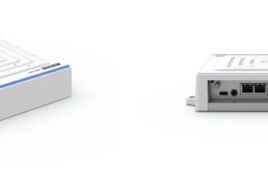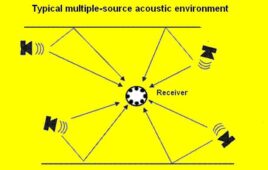Venice, Italy, and Zurich, Switzerland ‚— Using an IBM‚®Blue Gene/L supercomputer, scientists of the ETH Zurich (Swiss Federal Institute of Technology) and the IBM Zurich Research Laboratory demonstrated the most extensive simulation yet of real human bone structures, providing doctors with a ‚“high-definition‚†view of fragility or strength of bones they never had before. This achievement could lead to better clinical tools to improve the diagnosis and treatment of osteoporosis.

Copyright: ETH Zurich, IBM Research
The early detection of osteoporosis is crucial in order to prevent its progress. This breakthrough simulation could greatly enhance a clinician‚’s ability to better treat fractures and analyze and detect osteoporotic fragility, in order to take preventative measures before osteoporosis advances in patients.
Osteoporosis is the most widespread bone disease worldwide, affecting 75 million people in the US, Europe and Japan alone, and causing health costs second only to those associated with cardiovascular diseases. Literally ‚“porous bone‚â€, this disease is characterized by loss of bone density, resulting in a high risk of fractures, and is a major cause of pain, disability and death in older persons.2 Unfortunately, in many cases, osteoporosis is not diagnosed until a fracture has occurred, but by then the disease is already in an advanced stage, requiring implants or surgical plates to treat or prevent further fractures.
Today, osteoporosis is diagnosed by measuring bone mass and density using specialized x-ray or computer tomography techniques-a highly empirical process.

Copyright: ETH Zurich
Studies have shown, however, that bone mass measurements are only a moderately accurate way to determine the strength of the bone because bones are not solid structures. Inside the compact outer shell, bones have a sponge-like center. This complex microstructure accounts for the bone‚’s capability to bear loads and therefore represents a better indicator of a bone‚’s true strength.
Aiming for an accurate, powerful and fast method to automate the analysis of bone strength, scientists of the Departments of Mechanical and Process Engineering and Computer Science at ETH Zurich teamed up with supercomputing experts of IBM‚’s Zurich Research Laboratory. The breakthrough method they developed combines density measurements with a large-scale mechanical analysis of the inner-bone microstructure.
Using large-scale, massively parallel simulations, the researchers were able to obtain a dynamic ‚“heat map‚†of strain, which changes with the load applied to the bone. This map shows the clinician exactly where and under what load a bone is likely to fracture.
Utilizing the massively large-scale capabilities of the 8-rack IBM Blue Gene/L‚® supercomputer, the research team was able to conduct the first simulations on a 5 by 5 mm specimen of real bone. In just 20 minutes of computing time, the supercomputer simulation generated 90 Gigabytes of output data.
In future work, IBM and ETH scientists plan to aim to advance their simulation techniques to go beyond the calculation of static bone strength and to be able to simulate the actual formation of the fractures for individual patients, thereby taking another step towards achieving a fast, reliable and early detection of people with high fracture risk.
::Design World::
Filed Under: Software • FEA, Medical-device manufacture





Tell Us What You Think!